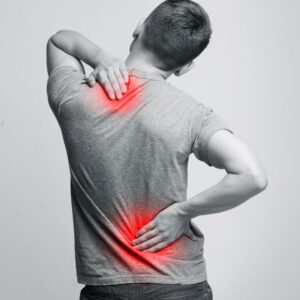The Life-Altering Effects of Untreated Scoliosis: A Comprehensive Overview
Scoliosis, a pervasive yet frequently misunderstood condition, causes a distinctive sideways curvature of the spine and affects millions of individuals worldwide. While often manageable with the correct interventions, if left unchecked, it can lead to profound health issues. This article aims to shed light on the ramifications of untreated scoliosis, emphasizing the pivotal role of early detection and timely treatment.

Understanding Scoliosis
Scoliosis is a complex disease that prompts an abnormal S-shaped or C-shaped curvature in the spine. Although it can strike anyone, regardless of age, it predominantly affects children aged 11 and older. The condition, in its mild form, often manifests no symptoms or pain, causing it to go unnoticed. However, subtle changes in posture or an uneven alignment of the shoulders or hips can hint at its presence.
While the root cause of scoliosis remains shrouded in scientific uncertainty, researchers attribute its onset to a blend of genetic and hormonal factors. If a parent or sibling has scoliosis, the probability of developing the condition increases significantly. Healthcare providers can accurately diagnose scoliosis through a combination of physical examination and imaging techniques like X-rays.
The Harrowing Consequences of Untreated Scoliosis
When scoliosis goes untreated, it paves the way for a plethora of health complications. Moderate to severe scoliosis can instigate chronic pain and progressively augment the deformity of the spine. In rare but severe instances, the distortion of the rib cage induced by the spinal curvature can exert pressure on the heart and lungs. This increased pressure impedes normal breathing and strains the heart’s pumping ability.
Untreated scoliosis tends to progress incrementally, on average, at one degree per year. This progression can culminate in significant spinal deformity, leading to conspicuous physical changes. These may include uneven shoulders, prominent ribs on one side of the body, asymmetrical hips, and a lateral shift of the waist and trunk. The physical changes, coupled with the potential for internal organ damage, underscore the urgency of addressing scoliosis promptly and effectively.
Navigating the Treatment Landscape for Scoliosis
The course of treatment for scoliosis hinges on several factors, including the severity of the spinal curve and its precise location. In mild cases, regular medical check-ups may suffice. As the condition progresses, more aggressive interventions become necessary. Bracing is a common treatment approach, especially in children and teens, where it helps to halt the worsening of the curve.
Physical therapy plays a crucial role in the treatment regimen, helping to bolster muscle strength and promoting better posture, thereby alleviating discomfort. In the most severe cases, surgery may be the only viable option. Spinal fusion is the standard surgical procedure, which aims to correct the spinal curve by fusing two or more of the vertebrae together.
In recent years, a novel surgical method, anterior vertebral body tethering, has emerged. This technique involves the insertion of screws into the affected vertebrae. A cord attached to the screws is then tightened, pulling the vertebrae together on one side and opening them on the other. This method realigns the spine and facilitates proper vertebral growth.
The Journey of Living with Scoliosis
Despite the challenges scoliosis presents, with the right treatment plan and support, individuals with scoliosis can lead normal, fulfilling lives. Numerous support groups cater to children, teens, and their parents, offering a sense of community and solace. These groups canprovide invaluable advice, share personal experiences, and provide emotional support during the journey of living and coping with scoliosis. They serve as a testament to the resilience of those living with scoliosis, their determination to overcome adversities, and their commitment to lead full and active lives
Conclusion
Scoliosis, if left untreated, can dramatically alter one’s life, leading to health complications and altering physical appearance. However, with early detection, appropriate treatment, and ongoing management, individuals with scoliosis can lead full, active lives. It is crucial that we raise awareness about the importance of early screening for scoliosis, particularly in children and teens, to facilitate early diagnosis and intervention.
Through our collective efforts, we can ensure that the narrative around scoliosis evolves from one of fear and uncertainty to one of resilience, hope, and empowerment. Let us continue to support those living with scoliosis and celebrate their strength and determination.
